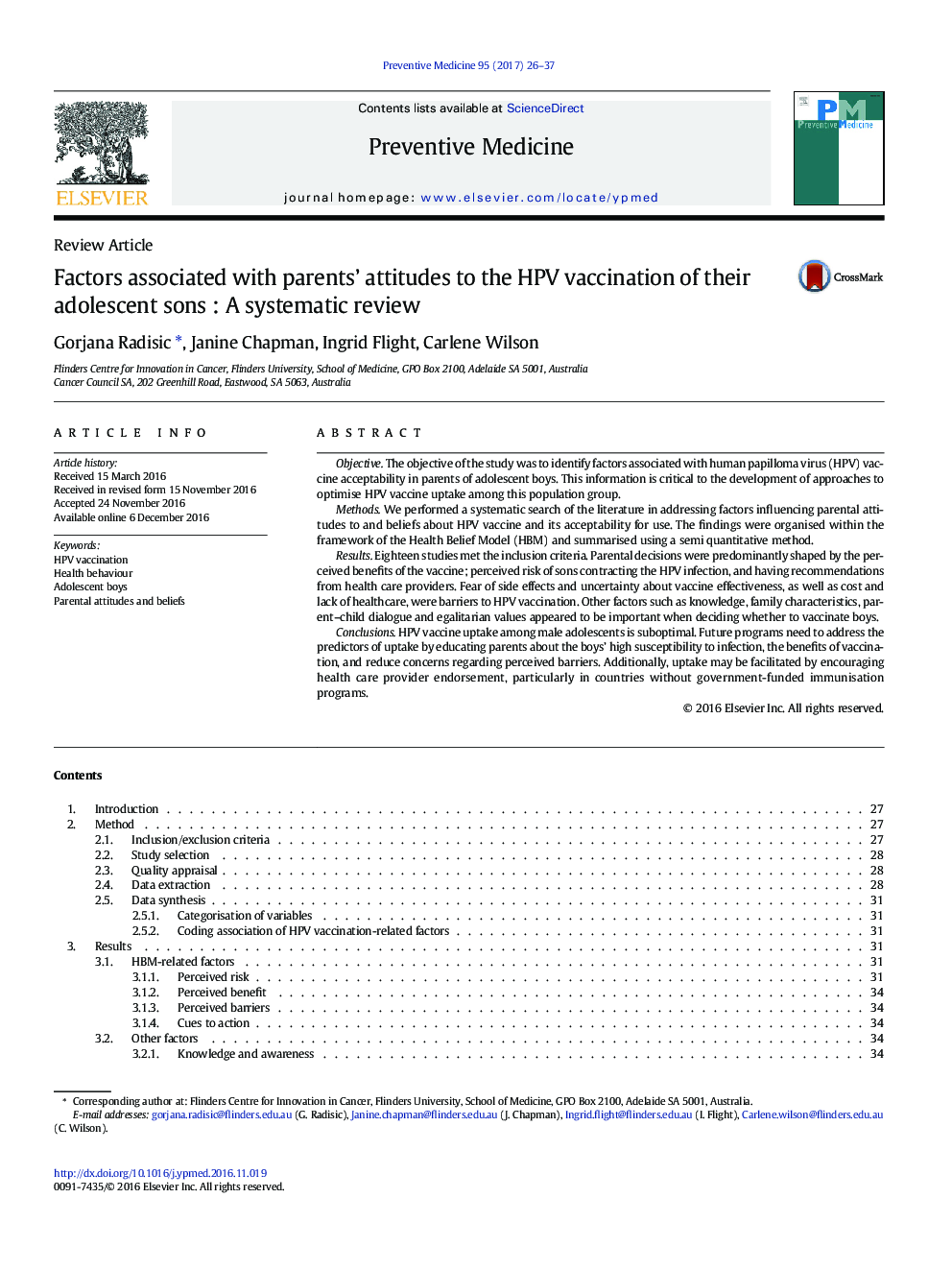| Article ID | Journal | Published Year | Pages | File Type |
|---|---|---|---|---|
| 5635805 | Preventive Medicine | 2017 | 12 Pages |
â¢HPV vaccination of boys remains low despite increased recommendation.â¢Parental desire to protect sons' health is the strongest predictor of vaccination acceptability.â¢Parent education targeting boys' susceptibility and overcoming barriers is needed.â¢Inconsistency in outcome measures of HPV vaccine acceptance requires utilization of valid scales.
ObjectiveThe objective of the study was to identify factors associated with human papilloma virus (HPV) vaccine acceptability in parents of adolescent boys. This information is critical to the development of approaches to optimise HPV vaccine uptake among this population group.MethodsWe performed a systematic search of the literature in addressing factors influencing parental attitudes to and beliefs about HPV vaccine and its acceptability for use. The findings were organised within the framework of the Health Belief Model (HBM) and summarised using a semi quantitative method.ResultsEighteen studies met the inclusion criteria. Parental decisions were predominantly shaped by the perceived benefits of the vaccine; perceived risk of sons contracting the HPV infection, and having recommendations from health care providers. Fear of side effects and uncertainty about vaccine effectiveness, as well as cost and lack of healthcare, were barriers to HPV vaccination. Other factors such as knowledge, family characteristics, parent-child dialogue and egalitarian values appeared to be important when deciding whether to vaccinate boys.ConclusionsHPV vaccine uptake among male adolescents is suboptimal. Future programs need to address the predictors of uptake by educating parents about the boys' high susceptibility to infection, the benefits of vaccination, and reduce concerns regarding perceived barriers. Additionally, uptake may be facilitated by encouraging health care provider endorsement, particularly in countries without government-funded immunisation programs.
